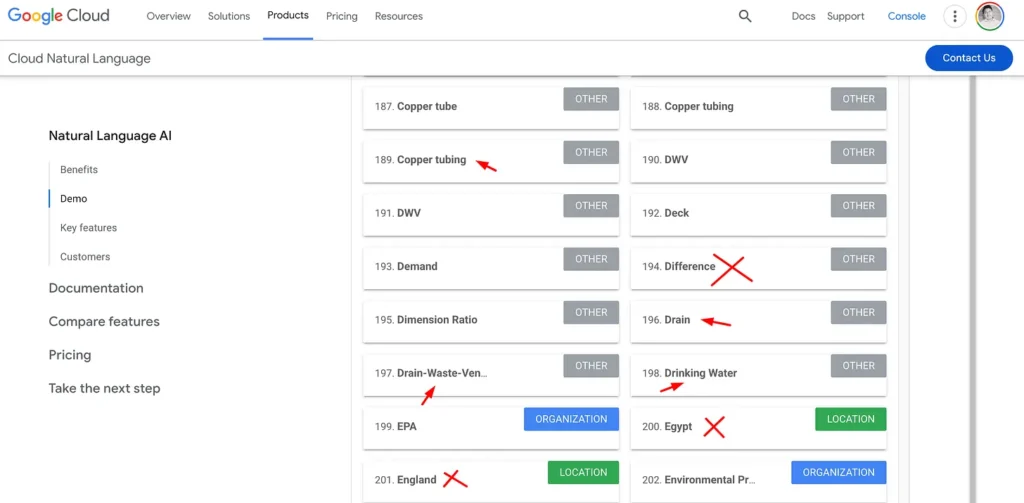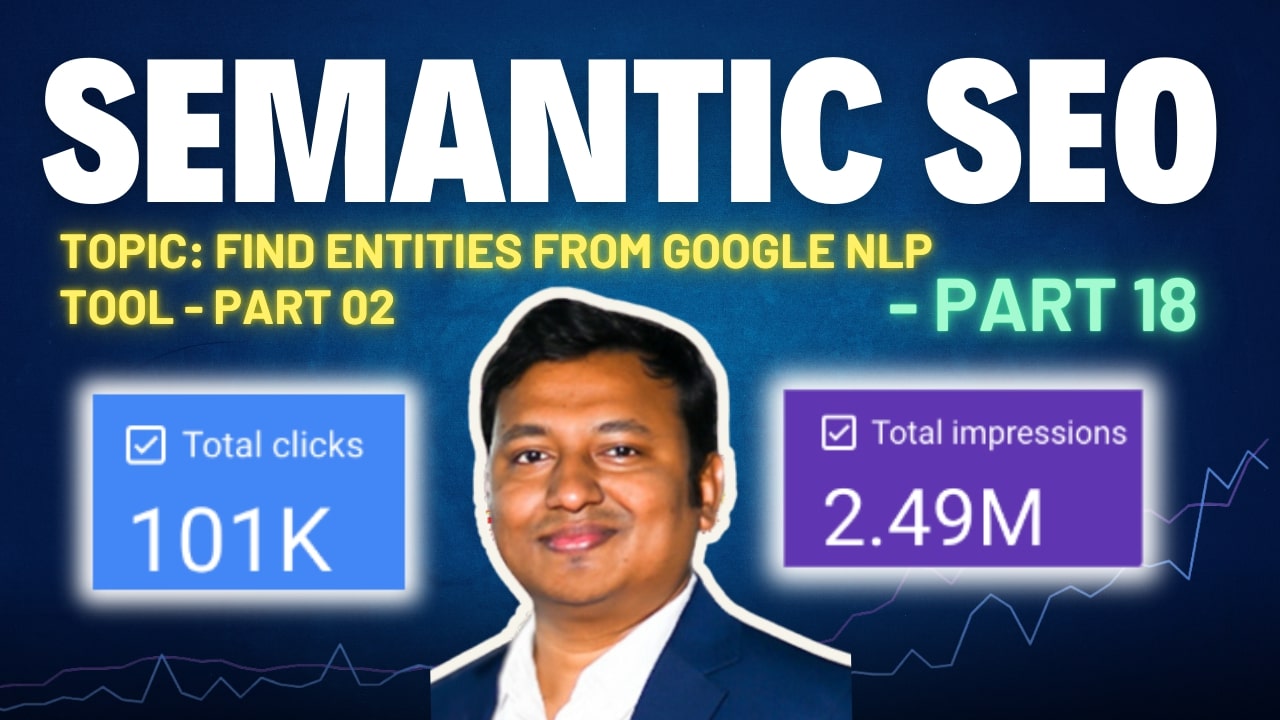The Google Natural Language API (NLP Tool) is a machine-driven parser that extracts Entities, Sentiment, Salience Scores, and Topical Categories from text. It approximates how Google itself may parse and semantically classify your content during crawl, indexation, and ranking.
If you want your content to match Google’s interpretation layer, this is one of the closest tools to simulate it.
Key Concepts Introduced
- Entity Recognition: Detects proper nouns, terms, and concepts from body text.
- Entity Types: Person, Place, Organization, Consumer Good, Event, etc.
- Salience Score: Measures entity relevance to the central topic.
- Sentiment: Evaluates tone attached to each entity mention.
- Category Detection: Assigns a taxonomy label (e.g., /Home & Garden/Plumbing)
Step-by-Step: How to Use Google NLP Tool for Entity Mining
1. Access the Tool
Search: Google NLP Free Checker → Use the demo tool provided by Google Cloud NLP
2. Input Source Text
- Copy text from:
- Wikipedia Articles
- Competitor Pages
- Internal Pages
- Paste it into the tool
Ideal for mining entity-rich, authoritative sources (e.g., “Plumbing” Wikipedia page)

3. Run Analysis
- Click “Analyze”
- Wait for the tool to return:
- Entities Table
- Salience Scores
- Sentiment Analysis
- Content Categories (e.g., “Building Materials > Plumbing”)
4. Export Entity List
- Copy-paste the entity table into Google Sheets
- Clean the list:
- Keep: Relevant noun entities like “Wrench”, “Pipe”, “Water Heater”
- Discard: Noise words like “article”, “discussion”, “source”, “illustration”

How This Helps Semantic SEO
| Benefit | Description |
|---|---|
| Entity Coverage | Ensures you’re addressing core and peripheral concepts |
| Topical Alignment | Helps your content get classified under the correct category in Google’s knowledge layer |
| Sentiment Adjustment | Useful for product reviews, testimonials, service articles |
| Salience Analysis | Tells you whether your article is “about” the entity or merely “mentions” it |
Also Read …
Use TextRazor for free entity extraction
Try Google NLP API for real-time NER
Learn to manually extract semantic entities
Practical Implementation Framework
E-A-V Model Recap:
- Entity = Plumbing
- Attribute = Tool Used
- Value = Pipe Wrench
Example Output from Google NLP Tool
| Entity | Type | Salience | Sentiment |
|---|---|---|---|
| Plumbing | Consumer Good | 0.89 | Neutral |
| Pipe Fitting | Thing | 0.72 | Neutral |
| Bathroom | Location | 0.41 | Slightly Positive |
| Water Heater | Consumer Good | 0.33 | Neutral |
Optimization Tactics Post-Extraction
- Cluster the Entities by type: tools, services, materials, room types
- Develop Subsections or H2s for each semantic group
- Sprinkle Attributes & Values to form E-A-V triples
- Run Final Draft Through NLP Again:
- Check if target entities show high salience
- Confirm category alignment (e.g., “/Home Improvement/Plumbing”)
Advanced Use Cases
| Use Case | Outcome |
|---|---|
| NLP + Wikipedia Entities | Create first and second-degree topical maps |
| NLP + Sentiment Data | Improve product pages or service copy |
| NLP + Salience Score | Determine anchor entity for content |
| NLP + Category Detection | Validate entity-to-topic relevance |
Suggested Sheet Columns for Entity Curation
| Entity Name | Type | Salience | Sentiment | Keep? (Y/N) | Category |
|---|---|---|---|---|---|
| Wrench | Thing | 0.76 | Neutral | Y | Tool |
| Emergency Repair | Event | 0.62 | Positive | Y | Service |
| Vector | Design Term | 0.45 | Neutral | N | Graphic Concept |
| Mario | Brand | 0.33 | Neutral | N | Entertainment |
Semantic SEO Philosophy Reminder:
Google doesn’t just parse strings of words.
It builds knowledge graphs of relationships.
And entities are the building blocks.
Coming in Part 19: How to Extract Entities from TextRazor (Free Tool) – Part 19
Disclaimer: This [embedded] video is recorded in Bengali Language. You can watch with auto-generated English Subtitle (CC) by YouTube. It may have some errors in words and spelling. We are not accountable for it.
